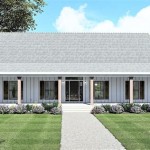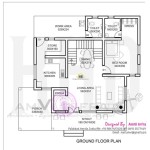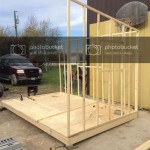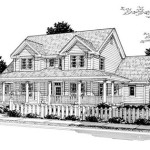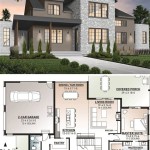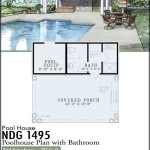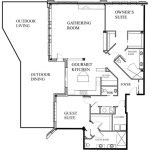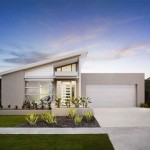Pavilion Style House Floor Plans: Essential Aspects Explained
Pavilion-style houses, renowned for their elegant and expansive layouts, have gained considerable popularity in modern architecture. These homes feature multiple pavilions connected by breezeways, courtyards, or galleries, creating a sense of spaciousness and indoor-outdoor integration.
Origins and Evolution
Pavilion-style architecture finds its roots in 18th-century Europe, particularly in France. The pavilions served as independent structures within a sprawling estate, each serving a specific purpose. Over time, these pavilions were incorporated into residential design, eventually evolving into the contemporary pavilion-style houses we know today.
Design Characteristics
Pavilion houses are characterized by their distinct design elements:
- Multiple Pavilions: The primary feature of a pavilion-style house is the presence of multiple pavilions connected via open spaces.
- Breezeways and Galleries: These connecting elements allow for natural ventilation, sunlight, and seamless flow between spaces.
- Courtyards and Terraces: Outdoor areas are an integral part of pavilion-style houses, providing a tranquil retreat and extending living spaces.
- Asymmetrical Layout: Pavilion houses often feature asymmetrical floor plans, creating a dynamic and visually appealing exterior.
- Large Windows and Openings: Generous windows and openings maximize natural light and connect the interior with the surrounding landscape.
Advantages of Pavilion Style Floor Plans
Pavilion-style floor plans offer numerous benefits:
- Spacious and Expansive: The multiple pavilions create a spacious and airy feel, promoting natural ventilation and comfortable living.
- Flexibility and Adaptability: The modular nature of the floor plan allows for customization and adaptation to specific needs and preferences.
- Blurred Boundaries: Open spaces and large windows seamlessly integrate indoor and outdoor areas, creating a harmonious living environment.
- Natural Light and Ventilation: The abundance of windows and open spaces ensures natural light and ventilation throughout the house, contributing to a healthy and comfortable atmosphere.
Considerations for Pavilion Style Floor Plans
While pavilion-style floor plans offer significant advantages, there are a few considerations to keep in mind:
- Site Requirements: Pavilion-style houses require a relatively large lot size to accommodate the multiple pavilions and connecting spaces.
- Construction Costs: The construction of pavilion-style houses can be more expensive than traditional designs due to the use of multiple roof systems and the need for specialized detailing.
- Privacy and Security: The open and expansive layout may reduce privacy in certain areas, requiring careful planning and landscaping.
Conclusion
Pavilion-style house floor plans offer a unique and charming approach to residential design. With their spacious layouts, blurred boundaries, and emphasis on natural light and ventilation, these homes provide a comfortable and harmonious living environment. While site requirements and construction costs should be taken into consideration, the benefits of pavilion-style floor plans often outweigh the challenges. If you desire a home that seamlessly connects with its surroundings and offers a sense of grandeur, a pavilion-style floor plan is an excellent choice to explore.

Pavilion Plan 3 House Plans For Spacious Private Living Luxury

Pavillion Home Design Ideas Stonewood Homes

Pavilion Design Home Plans Dream House Floor

Pavilion Style Home Design 4 Or 5 Bedrooms 2 1 Bathrooms Building Plans House Floor

Pavillion Home Design Ideas Stonewood Homes

Pavilion Plan 2 House Plans For Spacious Private Living

Country Pavilion Floor Plan

Pavilion Style Home Design 4 Or 5 Bedrooms 2 1 Bathrooms Rumpus Room Billiard House Plans 353m2 3880 Sq Feet Dream Container Blueprints

Pin Em Building Ideas

Pavilion 3 Home Design Floor Plans Plan House

